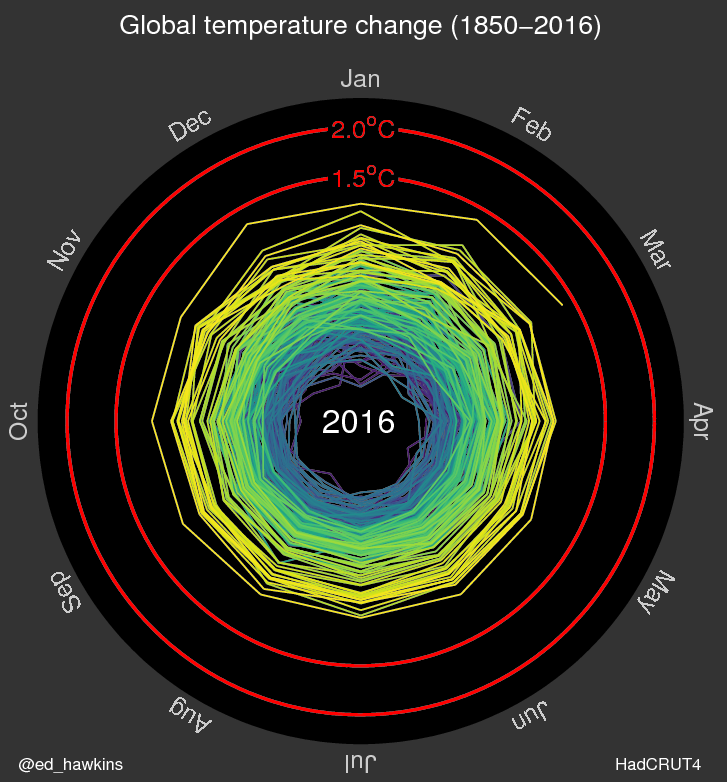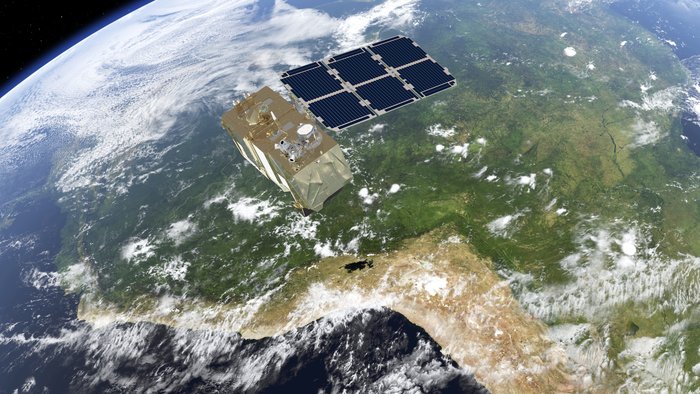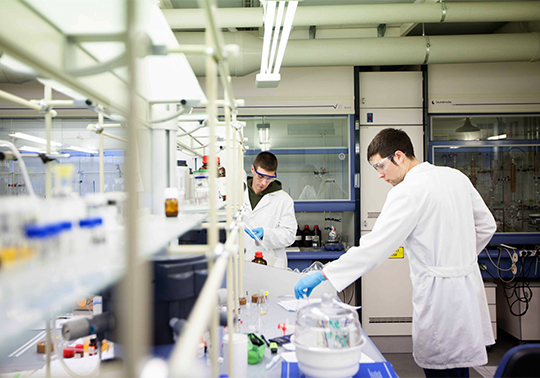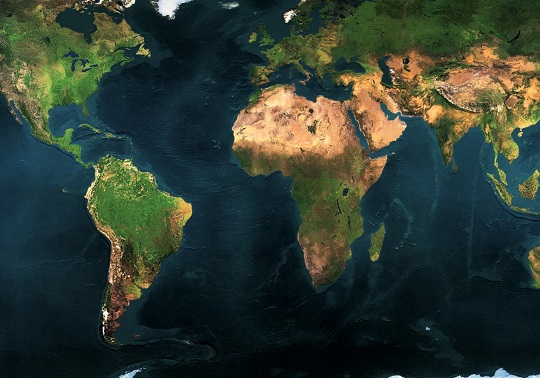
Although its seems oddly enough in these cold days, the global temperatures are breaking records. 2016 has become the hottest year since the records exist, with an average of 14.8 ºC overcoming its predecessor 2015.
20 january 2017
The global temperatures increase reached its peak in February 2016, when the temperature on Earth was 1.5 ºC, higher than the beginning of the Industrial Revolution, according to an analysis made by Copernicus Climate Change Service(C3S). This institution has detected that the dramatic rise was registered in places such as the Artic, but there were also extreme conditions in Southern Africa earlier this year, in the East and Southeast Asia before the summer monsoon, in Middle East by the end of summer and in some parts of North America in summer and autumn. The year we have left behind has been 0.2 ºC warmer than the year before, something quite alarming. Ed Hawkins, climate scientific at the University of Reading, released from Twitter, barely a year ago, a GIF which went viral. The GIF showed, in an impressive way, the temperature increase in our planet since the beginning of the records.
How the increase of temperatures can affect the planet?
The effects caused by this phenomenon are many and increasingly severe. Juan Garcés de Marcilla, head of Copernicus del ECMWF services, remarked:
“We are witnessing the climate change impacts around the whole world. The temperatures of soil and sea are rising along with sea levels, while the sea ice extent, the volume of glaciers and the snow cover are decreasing; the precipitation patrons are changing and the extreme weather events such as heat waves, floods and dryness are becoming more regular and intense in several regions. In the future, the climate change impact will depend on the effort we make now.”
- Melting ice-caps: One of the consequences more notable of the global warming. The last winter was unprecedented in the Arctic. There were days in which the temperatures reached 1 ºC or 2 ºC, something unusual when speaking of a place where average temperatures are around -50 ºC due to strong winds coming from Siberia. Consequently, Marcus Carson, member of the Stockholm Environment Institute, claimed:
What is happening bring us closer to the turning points that can multiply the effects of climate change, and make them potentially irreversible.
- Increase in CO2 emissions: This year, for the first time, CO2 levels did not dropped of level 400 ppb in the North Hemisphere from summer to autumn. In previous years, the CO2 absorption by vegetation during summer season has caused the lowest point of CO2 levels to be registered in September.
- Increase in forest fires: The rise in global temperature, besides enhancing the major glaciers melting, it is also advancing the arrival of warm weather. This phenomenon makes forested areas to dry and remain in that condition during more time, thus increasing the chances of being burned. Destructive fires were seen in Fort McMurray, Canada. During June and July, uncontrolled fires related to last year high temperatures were unleashed in Siberia.
and what about Spain?
Our country future is also bound to global warming. In 2015, “Climate change in Europe: perception and impacts 1950-2050” was published, a report wrote by Jonathan Gómez Cantero, a climatologist and member of Intergovernmental Panel on Climate Change of the United Nations. It was assured climate change “pushed” Spain into a similar climate to that of Morocco. It is expected that, for the year 2050, the average temperature rise to 5 ºC. This increase of temperatures, besides bringing longer summers and warmer winters, can induce the loss of certain types of cultivation, such as the olive tree in Andalusia, the vineyards in La Rioja or citrus in the Valencian Community.
Finally, it is also worth noting that this phenomenon will lead to a progressive rise in sea level. The next picture shows how the city of Valencia and its surroundings will remain when global temperatures rise by 2 ºC and 4 ºC respectively. It can be observed that the Albufera will be totally submerged in the Mediterranean and the capital city of Turkey will lose a significant part of its territory.
.
You can see how the rise in sea level will affect in anywhere in the world throughout the website: http://choices.climatecentral.org


















